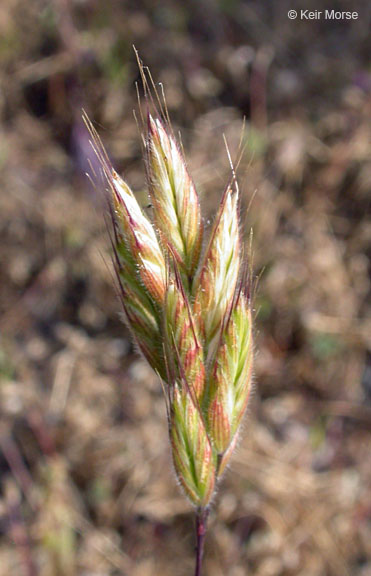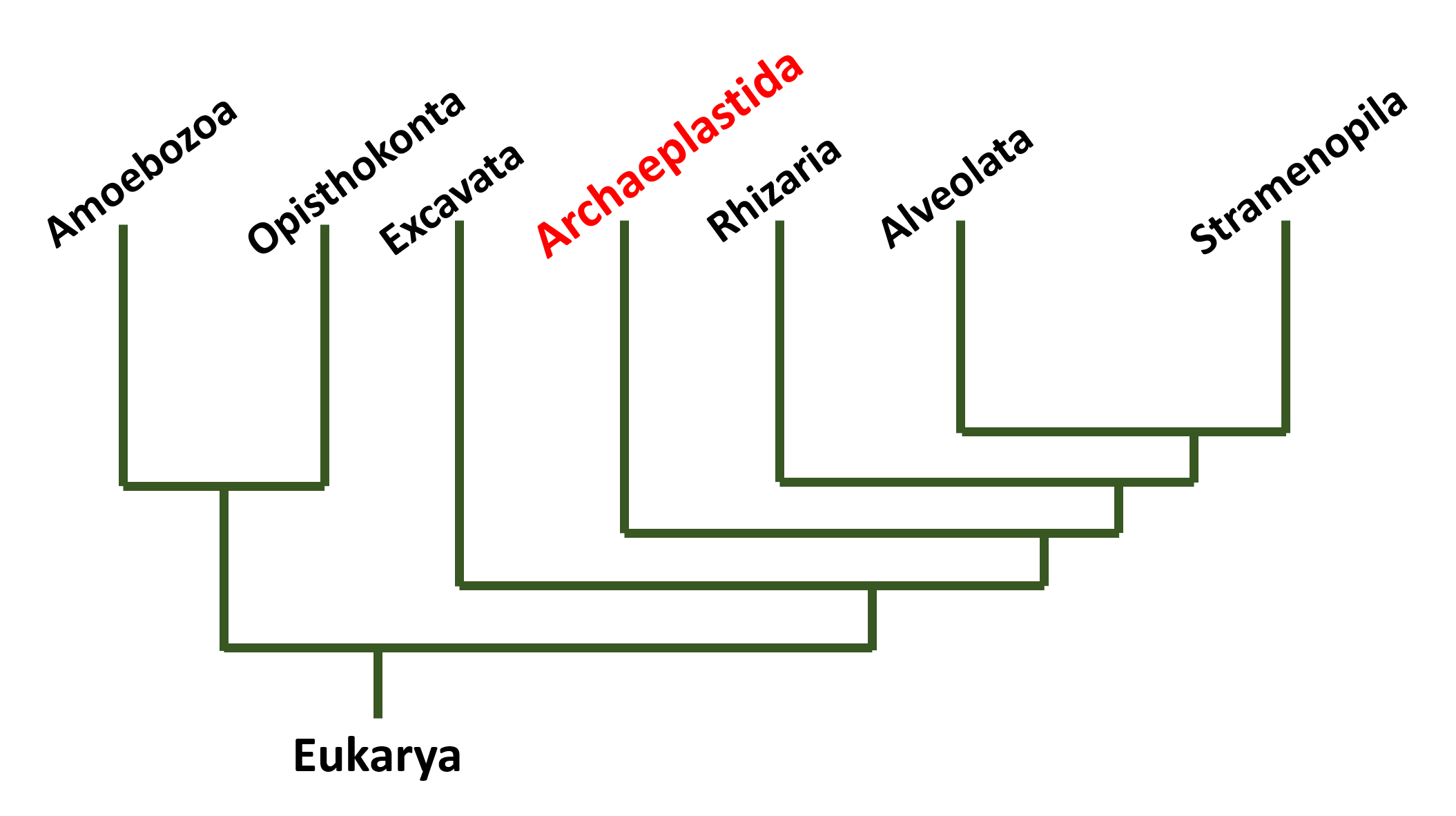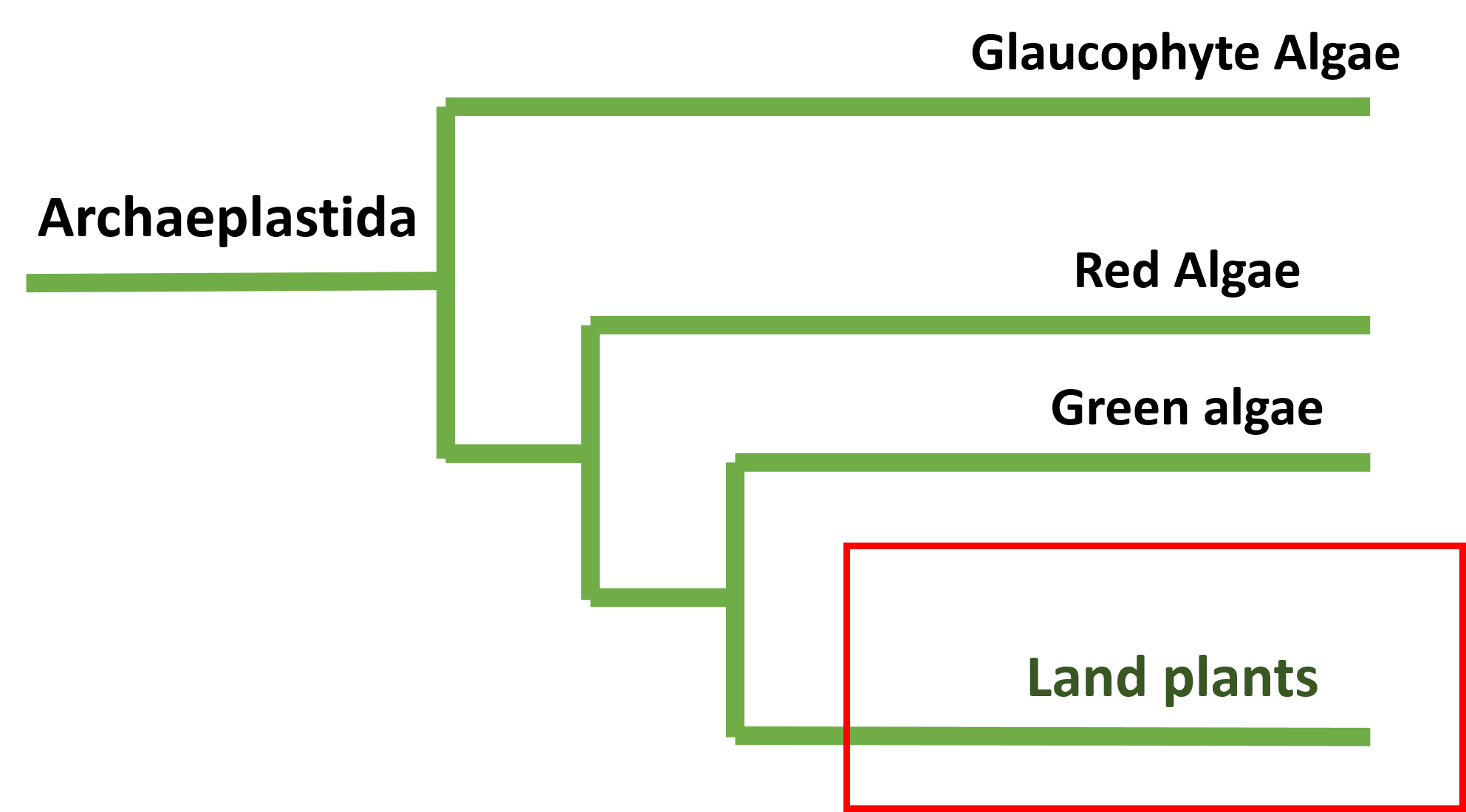
Classification
This is the classification of Bromus hordeaceus (USDA 2014):
Domain - Eukarya
Major Clade - Archaeplastida
Kingdom - Plantae – Plants
Subkingdom - Tracheobionta – Vascular plants
Superdivision - Spermatophyta – Seed plants
Division - Magnoliophyta – Flowering plants
(Angiosperm)
Class - Liliopsida – Monocotyledons
(Like
Saffron)
Subclass - Commelinidae
Order - Cyperales
Family - Poaceae – Grass family
(Like
Lemongrass)
Genus - Bromus L. – brome (Like
Cheatgrass)
Species - Bromus hordeaceus L. – soft brome
The bolded classification groups shown above will be explained below.
Above is a phylogenetic tree for Eukarya that shows the
seven major
clades. Bromus hordeaceus belongs to the major clade called
Archaeplastida.
 A trait singular to the Archaeplastida clade is a
plastid arising from endosymbiosis with a cyanobacterium.
A trait singular to the Archaeplastida clade is a
plastid arising from endosymbiosis with a cyanobacterium.
Descriptions of Bromus hordeaceus's Main Classification Groups:
Domain: Eukarya (Eukaryotes)
- Bromus hordeaceus falls beneath the Eukaryotic domain because its cells contain no peptidoglycan beneath their cell walls; this quality differentiates it from the Bacteria domain. Soft chess's cells also contain membrane-bound organelles and a nucleus, unlike both the Archaea and Bacteria domains. Organisms in this domain can be incredibly different except for these simple traits. A few examples of other Eukaryotes are the Peacock Flounder and the Diatoms to show you how varied they can be.
Major Clade: Archaeplastid
- The Archaeplastida major clade's singular trait is a plastid arising from endosymbiosis with a cyanobacteria. Bromus hordeaceus is an Archaeplastid because it has this plastid which gives Soft brome the ability to photosynthesize. Another organism in this major clade is the Mermaid Tress, a fancy name for an organism in a kingdom called Green Algae.
Kingdom: Plantae
- Bromus hordeaceus is a land plant which is the Plantae kingdom. All organisms in this kingdom have cell walls that are made from cellulose that support them and chloroplasts to photosynthesize. Bromus hordeaceus is also in the subkingdom of vascular plants because it contains phloem (transports sugars, plant hormones, and other substances) and xylem (transports water and nutrients) up and down its stem to its leaves and roots. Two organisms in this kingdom are Poison Ivy and Edelweiss.
Division (Phylum): Magnoliophyta/Anthophyta
- Soft brome is in the Anthophyta phylum because it is a flowering plant. Organisms in the Magnoliophyta phylum are angiosperms which means that their seeds are covered. Organisms in this phylum are also vascular, as described in the Kingdom section, and have flowers and fruit, pollen tubes and eggs for reproduction. Other organisms that fall under this phylum are Grassy Tarweed and Lowbush Blueberries.
Class: Liliopsida (Monocot)
- Bromus hordeaceus has been placed in the Liliopsida class because it is a monocot. A monocot has one cotyledon as well as scattered xylem and phloem within its stem.
Order: Cyperales
- Under Construction
Family: Poaceae (Grass family)
- Under Construction
Genus: Bromus L. (Brome)
- Under Construction
Species: Bromus hordeaceus L. (Soft brome, Soft chess, Soft cheat, or Bull grass)
- Under Construction
Return to Homepage Wanna know its Habitat?
Go to MultipleOrganisms.net!

